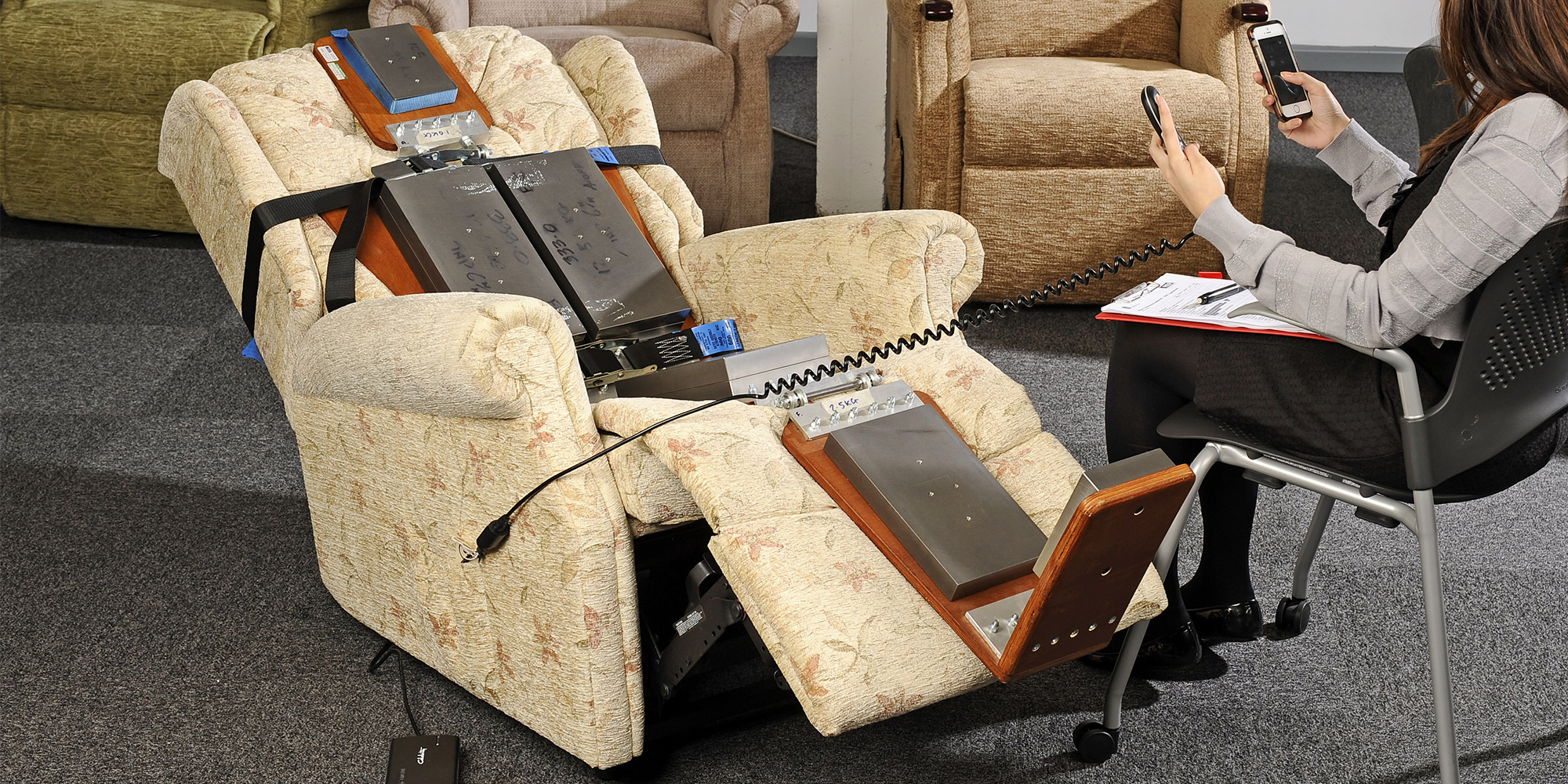IEC 60335 Electrical Safety Testing of Electrically Powered Recliners
In the realm of furniture testing, ensuring electrical safety is paramount. The IEC 60335 series of standards provides comprehensive guidelines for the safety assessment of various electrically powered household and office appliances, including recliners. Compliance with these standards ensures that products are safe to use in residential and commercial settings.
The IEC 60335-2-10 standard specifically addresses the electrical safety testing requirements for electrically powered recliners. This test involves a series of rigorous procedures aimed at identifying potential hazards such as electric shock, fire risks, and other electrical faults that could compromise user safety. The primary objective is to ensure that the electrical components of these furniture pieces do not pose any danger when in normal use.
The testing process begins with detailed inspection and preparation of the specimen. This includes checking for proper grounding, ensuring that all electrical connections are secure, and verifying that the product meets the specified power ratings. The actual test involves subjecting the recliner to various stress conditions designed to mimic real-world usage scenarios. These tests typically include voltage withstand testing, insulation resistance measurement, and dielectric strength evaluation.
During these tests, specialized instruments such as high-voltage testers and data acquisition systems are used to monitor performance parameters in real-time. The results of these tests are meticulously recorded and analyzed to ensure compliance with the stringent requirements set forth by IEC 60335-2-10.
The importance of this testing cannot be overstated, especially given the increasing complexity of modern electrically powered recliners. Features like motor-driven adjustments, heating elements, and advanced control systems can introduce new safety risks if not properly managed. By adhering to IEC 60335-2-10, manufacturers can demonstrate their commitment to quality and safety, thereby building trust with consumers.
Compliance with this standard is mandatory for products intended for sale in many countries around the world. Failure to comply may result in product recalls or even legal action. Therefore, it is crucial that furniture manufacturers prioritize these tests as an integral part of their quality control processes.
In summary, IEC 60335-2-10 electrical safety testing for electrically powered recliners is a critical step towards ensuring user safety and product reliability. By following this standard, manufacturers can produce high-quality furniture that meets international standards and satisfies regulatory requirements.
Why It Matters
The importance of electrical safety in the context of recliners cannot be overstated. Electrically powered recliners are sophisticated pieces of furniture that integrate various mechanical and electronic components. Any malfunction or defect could lead to severe accidents, including electric shocks, fires, or even explosions.
- Electric shock: Improper grounding or faulty wiring can result in electric shocks, which can be fatal if not handled correctly.
- Fires: Overheating due to poor insulation or overloaded circuits can cause fires, posing a significant risk to users and their surroundings.
- Mechanical failures: Faulty motors or controllers can lead to sudden movements of the recliner, causing injuries.
Given these potential hazards, it is essential that manufacturers adhere strictly to IEC 60335-2-10 standards. This ensures not only compliance with international regulations but also enhances brand reputation and customer satisfaction.
Scope and Methodology
The scope of the IEC 60335-2-10 standard encompasses a wide range of electrical safety tests applicable to electrically powered recliners. These include, but are not limited to, insulation resistance measurement, dielectric strength testing, overcurrent protection evaluation, and ground fault circuit interruption assessment.
The methodology involves several key steps:
- Initial inspection: Conduct a thorough visual examination of the recliner to identify any visible defects or discrepancies from design specifications.
- Preparation: Ensure that all electrical connections are secure and that the product meets its rated power requirements. Grounding should be verified before proceeding with further tests.
- Testing: Subject the recliner to various stress conditions using specialized equipment such as high-voltage testers, data acquisition systems, and thermal imagers. Collect real-time data on performance parameters during these tests.
- Data analysis: Analyze the collected data to determine compliance with IEC 60335-2-10 requirements. Any deviations from acceptable limits should be noted for corrective action.
These steps ensure a comprehensive evaluation of the electrical safety aspects of electrically powered recliners, providing peace of mind to users and regulatory bodies alike.
Industry Applications
- Hospitality: Hotels and resorts often provide electrically powered recliners in guest rooms. Ensuring these comply with IEC 60335-2-10 standards is crucial for maintaining a safe environment.
- Aged care facilities: Facilities catering to elderly individuals benefit from compliant recliners, which can enhance comfort while minimizing safety risks.
- Offices and homes: Many modern offices and private residences incorporate electrically powered furniture into their interior designs. Compliance with IEC standards ensures these are safe for prolonged use.
The widespread adoption of electrically powered recliners across various sectors underscores the necessity of rigorous electrical safety testing. By adhering to international standards, manufacturers can ensure that their products meet both regulatory requirements and user expectations.





